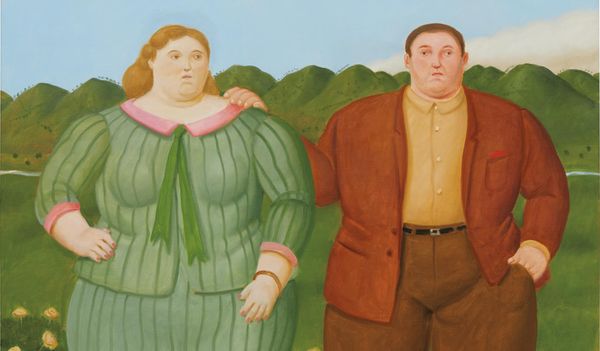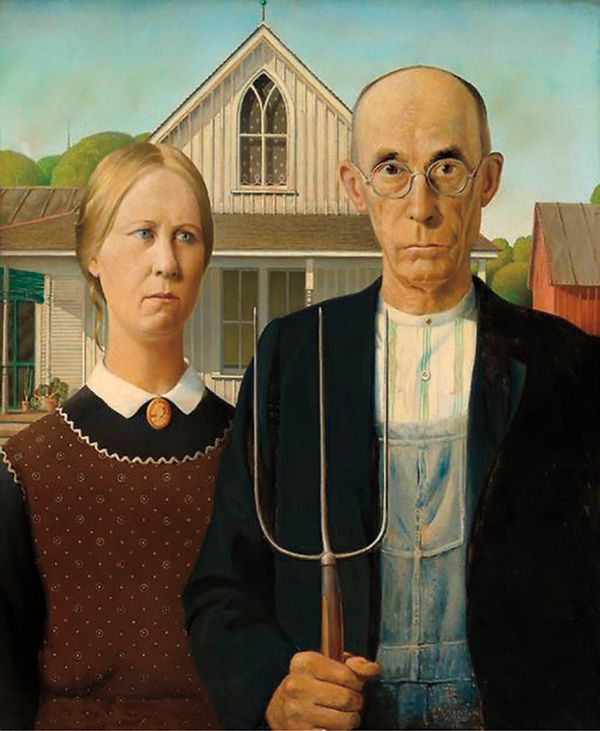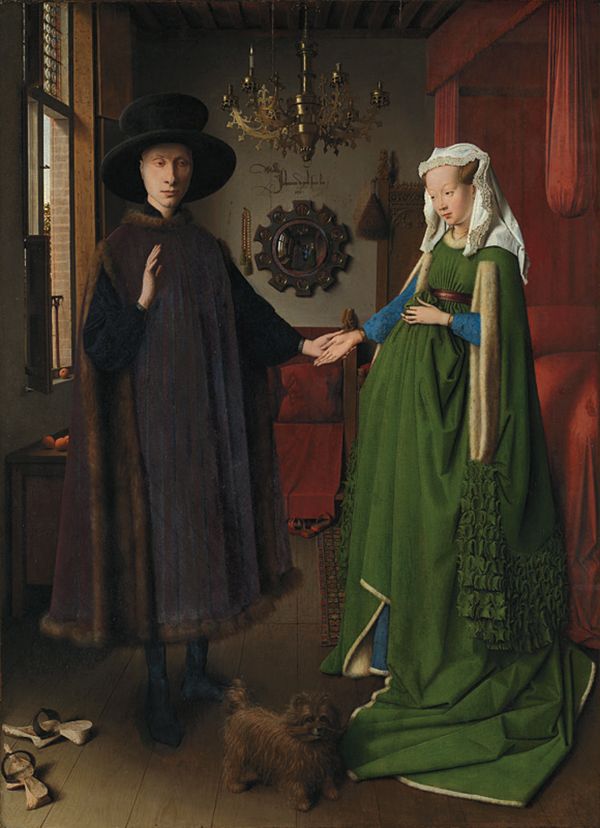Detail of Fernando Botero La Pareja, 2013
Fernando Botero's inimitable style of voluminous figures has positioned him on the world stage as the most important and recognizable Colombian modern painter, and this work from our upcoming Latin America sale is a quintessential contemporary example. Botero developed his signature technique early in his career in the 1960s, and yet his recent work continues to impress upon us the artist's masterful accomplishments and complex trajectory.
Born in the city of Medellin, Botero had little access to modern art and was thus influenced by the Spanish colonial art found in the chapels of his hometown. He earned a scholarship to study abroad in Spain in 1952, where he discovered a catalogue of Italian Renaissance art that reproduced Piero della Francesca's fresco The Queen of Sheba Adoring the Holy Wood from the Basilica of San Francesco in Arezzo. Enthralled by this work, Botero became obsessed with the sensuality of forms in Italian Renaissance art.
Inspired, he moved to Florence to study under the renowned art historian and scholar, Roberto Longhi. Botero's early paintings evince a deep understanding of both Old Masters, including Diego Velázquez and Giotto, as well as modern artists, such as Giorgio de Chirico. Botero later traveled to Mexico, where he experienced firsthand the work of Los Tres Grandes: Diego Rivera, David Alfaro Siqueiro and José Clemente Orozco. The monumental scale of the Mexican modernists' figures paired with their decisive social commentary had a strong impact on Botero's work, compelling him to experiment with excessive volume and proportions, tools that he would use to intensify the mordant comments he made on society's shortcomings.
The voluminous figures of [Botero's] painting allow the subsequent tendency—abstracting them from their natural setting to become a logical consequence of a sensuality, irony and humor...
—Benjamin Villegas
The couple featured in the present lot reflects Botero's preoccupation with daily life in the small towns in Colombia. At first glance, the painting engenders a typical marriage portrait, yet upon closer observation, this handsome pair appears void of any romantic emotions, in some ways reminiscent of Grant Wood's famous American Gothic from 1930.
Grant Wood American Gothic, 1930. Institute of Chicago, Friends of American Art Collection, 1930.934. © The Art Institute of Chicago / Art Resource, NY
However, their polished garb and the luscious, manicured garden setting is indicative of the upper middle class, leading us to ponder the social situation that led to this moment of repose. The peculiar rigidity and physical distance between these presumed lovers also recalls imagery found in Jan van Eyck's Arnolfini Portrait/Wedding from 1434. Yet, somehow their voluptuous scale imbues them with enigmatic feeling, as though they might burst with their unexpressed sentiments. Interestingly, both female figures of these works are shown wearing bright green dresses symbolically alluding to fertility.
Jan van Eyck Portrait of Giovanni Arnolfni and his Wife, 1434. National Gallery, London. © National Gallery, London / Art Resource, NY
In depicting these proud and stately figures, Botero remains detached, impartial and almost scientific. The portrait's ambiguity encourages the viewer to instead depend on color, background and attire for context. Ultimately, his figures are expressed through color and form ahead of presenting an overtly narrative subject. The contrast of the rigidity of the figures with his vibrant color palette creates a powerful tension. Botero once aptly stated, "An artist is attracted to certain kinds of form without knowing why. You adopt a position intuitively; only later do you attempt to rationalize or even justify it."
This keen observation and capacity for personal reflection demonstrates Botero's instinctual approach to painting, deeply imbuing both his early and more recent work with a natural confidence that stems from a lifelong dedication to his own unique vision of art, a vision that has made him one of the most recognizable figures in contemporary art today.


